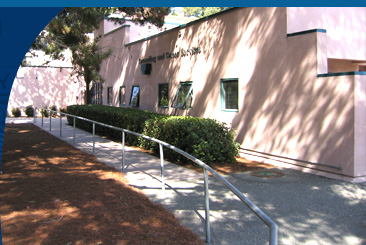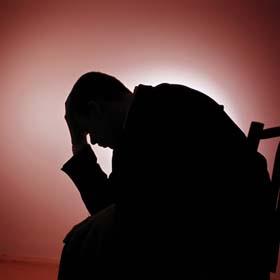An Ounce of Prevention
College Mental Health in Light of the Virginia Tech Massacre

A student walks into a dormitory and guns down two people. Two hours later, he strolls onto campus and kills 30 more before shooting himself in the head.
This was the Virginia Tech massacre that shook Americans beyond belief just two weeks ago. Investigators searching computer files, cell phone records and emails of 23-year-old Seung-Hui Cho have yet to find definitive evidence pointing to indication or motive for the massacre. Frustrating and most startling is the fact that this student seemed to be isolated from everybody on campus despite being a senior. Even family members have said they rarely heard him speak. All investigators have to work off of is a package Cho mailed to NBC after his first attack, containing a videotape tirade and written manifesto. Too little, too late.
In the aftermath of the Virginia Tech tragedy, many are questioning the precautionary steps – or lack thereof – taken by the school to prevent this kind of crisis. Unfortunately, life in Santa Barbara doesn’t preclude exposure to this kind of college campus violence. In 2004 – the most recent time period with available data – the county experienced 35 reported suicides, 13 of which were by people 21-44 years old. With UCSB, Westmont and Santa Barbara City College, students make a sizable percentage of the county’s population. From Virginia Tech to our own local academia, the need to provide students with proper counseling care is becoming essential for crisis prevention.
UCSB
Violence was channeled toward others as a result of mental illness in 2001, when UCSB freshman David Attias drove his car into five Isla Vista party-goers, killing four and critically injuring a fifth – a local reminder of possible consequences of mental illness left untreated. Since that tragedy, UCSB has taken several steps to improve their counseling program and ensure that students who need help can easily get it. The university hired more staff in the counseling department and created the social worker position, which meets with troubled students and decides if they should receive short-term treatment through the university or long-term treatment at home or in the community. The social worker also works as a liaison between the psychologists at the counseling center and the psychiatrists at Student Health.
Thus, to help students cope with the pressure of daily life and prevent tragedies like the reoccurrence of the Virginia Tech massacre, the university is now better equipped with a capable staff and an organized mental health program. Advisors and resident advisors (RAs) in the dormitories are trained through the counseling center on how to handle mental illness emergency situations. However, the troubled student more typically seeks out help himself or herself.
“There have been very few instances where I have had to make sure a student gets help,” said Glenn Beltz, a professor of mechanical engineering. “Usually you go into those situations with caution, point the student to health services.”
Professors, roommates, teammates, and RAs are encouraged to call the counseling center as soon as they are aware of a problem. They are not advised to make a judgment call on their own and instead to follow their instincts. “We have a lot of roommates and friends who come to us concerned about an individual’s eating disorder or stress,” said Jeanne Stanford, a therapist and director of University Counseling. “But what they need to remember is that they should not wait so long to get help. It puts unnecessary stress on the helper.”

Burt Romotsky, the UCSB social worker, said that if many students or faculty members come to them about an individual, they make sure to contact the troubled person.
As for students resistant to help, Stanford observes that counselors can do more students living on campus. Campus police, the Office of Judicial Affairs, and the Office of Student Life work together with counseling to ensure that a troubled student will not be a threat to themselves or others.
“Students need to feel comfortable with the counseling department so that we can help them work through the problems,” Stanford said. Unfortunately, many students believe that in the “suicide rule” urban legend – that is, a student will be expelled if it is discovered that he or she is considering suicide. This is a rumor that Stanford insists is simply not true. Unless someone is a qualified psychologist, they may not know a person’s history – how many times they have tried to kill themselves, what types of mental illnesses they have. These are all things to consider when deciding if it is best for a student to stay enrolled at school.
The counseling center has treated significant mental illnesses, but the staff remains concerned about the more frequent manifestations of self-harm. “Suicide, although rare on campus, does happen about one or two times a year,” said Romotsky. UCSB also provides students a full medical clinic, ready to perform psychiatric evaluations and prescribe medication while ensuring that students are in contact with therapy through the counseling center. The counseling center offers individual or group sessions, as well as relaxation zones with amenities like a massage chair. On the Counseling Center website, or in the center itself, students may find a wide range of information to help them cope with stressful issues.
The university offers preventative measures for student mental health. In a collaborative effort between Student Life and the Health Center, UCSB offers students a Wellness Program that provides students with information on such a broad range of activities as to include sports, self help, and meditation – all preventative measures to create a mentally and physically healthy student population.
Since the Virginia Tech shootings, UCSB has increased outreach to students to help them cope with grief or painful memories aroused by the event. There has also been an increased number of people referred for help by roommates and friends, which Stanford believes is helpful. “There is no problem with an increase in awareness,” she said.
Westmont

For its small size, Westmont College takes an extensive step into crisis prevention.
Its counseling center provides eight psychologists on campus for a student body of just over 1,300. A campus pastor is also accessible to students.
Westmont physics professor Ken Kihlstrom, who has helped students dealing with depression in the past, notes that the school is no stranger to tragedy. Previous incidents, like suicide, may explain the school’s present counseling efforts. “We’ve had suicides in the past,” Kihlstrom said, whose two biggest concerns are depression and suicide. He believes building rapport between students and faculty can help students feel more comfortable in discussing serious issues. Talking with a student and asking the right questions are crucial. But he said you also need to know when to take the next step. “The key is maintaining a student’s confidentiality but knowing your obligations,” he said. “As soon as suicide or harm to others enters the picture, you have to take the next step and get [professional help].”
Kihlstrom suggested that Westmont students in particular may feel pressured to live up to the Christian lifestyle affiliated with the school. But issues like academic anxiety, stress, isolation, and grief are common problems attributed not just to Westmont but almost every college throughout the nation.
Santa Barbara City College
SBCC’s Student Health and Wellness Program TEXT won runner-up for the 2002 Exemplary Program Award, given by the California Community College Board of Governors. Every semester, the school’s Student Health Service and Wellness Program offers each student six free counseling passes. Alyson Bostwick, a full-time time mental health counselor at SBCC, said the counseling center sees everything from test anxiety to complex personal issues.
“We help save lives, literally and figuratively,” said Bostwick, who sees the Student Health and Wellness Program as an extremely accessible resource for students on campus. Approximately 45 to 60 presentations about the program are presented a semester, and five full-time staff are available at the center, according to Bostwick. Like Kihlstrom, the top issues she sees among students are anxiety, stress, depression, grief and loss.
Drawing the line between a problem and a potentially harmful situation is something expert Dr. Lisa Firestone of the Glendon Association – a locally based organization promoting mental health – said schools should give serious attention to. Counselors need to look at how isolated a student is and whether or not that student is seeking help are key factors to examine, but she also suggests doing more. “We need to teach people not just what to look for, but how to get further help, and how to properly intervene.”
Firestone suggests a coordinated system that can gather information and help professionally intervene with precaution. This may be especially helpful on school campuses, where students and faculty can direct their concerns.
“You can’t guarantee tragedies will never happen, but you can certainly prevent a lot of it, and that’s what I’d like to see,” Firestone said.
So with the total population of college students in Santa Barbara County equaling roughly half the population of the city of Santa Barbara, the social well-being of young adults requires an intense level of scrutiny. The 2006 Goleta Postal Distribution Center shootings, of course, prove that these concerns apply to the non-collegiate world as well, but the events in Blacksburg, Virginia have drawn attention for the moment on the nation’s students. Santa Barbara residents no doubt would like to believe that no Virginia Tech-scale incident will happen here, but those in the business of counseling the troubled show that Santa Barbara far from perfect.
The words so often uttered after a tragedy like Virginia Tech are “We never expected something like this to happen here.” Those living in Santa Barbara County must be “We never expected something like this to happen here again.“



